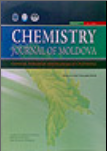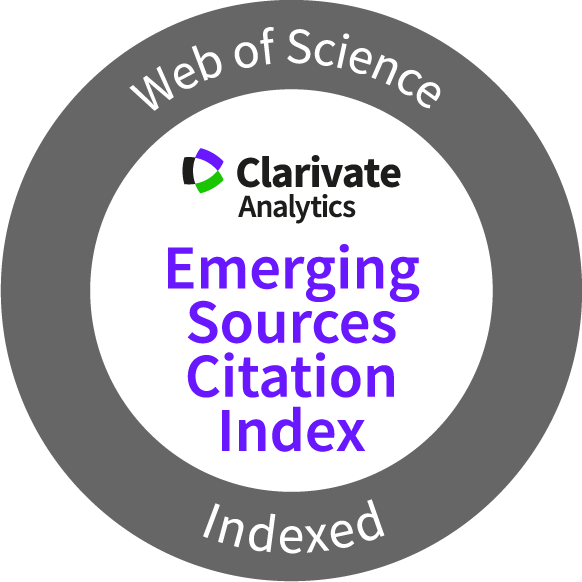Chemistry Journal of Moldova
Ecological chemistry
Author(s):
Field: Ecological chemistry
Type: Short communication
Issue: 2019 Volume 14, no.2
Pages: 117-121
Oksana Stavinskaya, Iryna Laguta, Tetiana Fesenko, Marina Krumova
Field: Ecological chemistry
Type: Short communication
Issue: 2019 Volume 14, no.2
Pages: 117-121
Full Text (PDF): Download
Abstract (PDF)
Graphical Abstract: Silver nanoparticles colloids were prepared using the extract from the leaves of Vitex agnus-castus. The effect of temperature on the reduction of silver ions and on the growth of silver nanoparticles was followed by measuring the intensity of the surface plasmon resonance band in the UV spectra. It was found that fast reduction of silver ions occurs even at 40°C, while effective synthesis of silver nanoparticles requires elevated temperatures of 60-80°C.
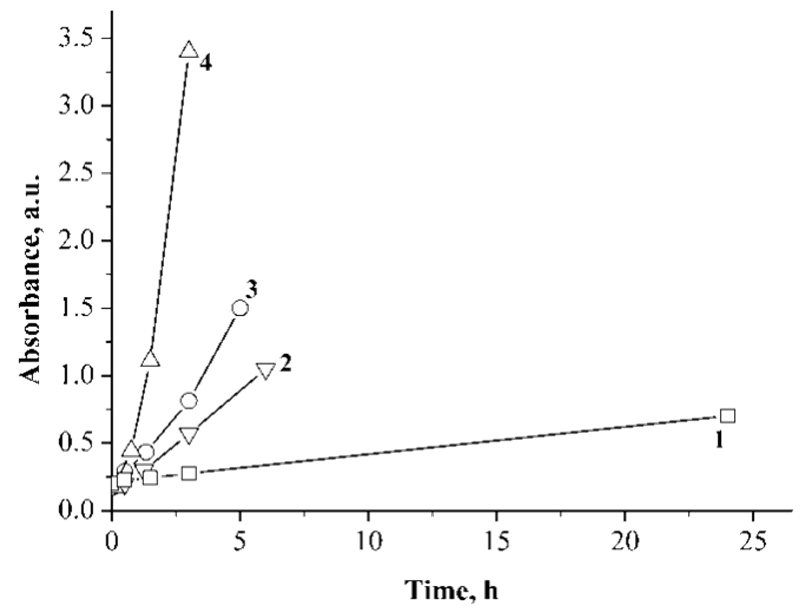
Graphical Abstract: Silver nanoparticles colloids were prepared using the extract from the leaves of Vitex agnus-castus. The effect of temperature on the reduction of silver ions and on the growth of silver nanoparticles was followed by measuring the intensity of the surface plasmon resonance band in the UV spectra. It was found that fast reduction of silver ions occurs even at 40°C, while effective synthesis of silver nanoparticles requires elevated temperatures of 60-80°C.

Downloads: 206
Author(s):
Field: Ecological chemistry
Type: Research paper
Issue: 2019 Volume 14, no.1
Pages: 61-67
Gheorghe Duca, Aliona Mereuta, Natalia Velisco, Claudiu Tanaselia, Tatiana Mitina
Field: Ecological chemistry
Type: Research paper
Issue: 2019 Volume 14, no.1
Pages: 61-67
Full Text (PDF): Download
Abstract (PDF)
Graphical Abstract: This study presents an assessment of water quality of Prut River using the Water Quality Index (WQI), calculated according to the weighted arithmetic water quality index method. The obtained results show that the water of Prut River may be classified according to WQI as good water quality of grade B for sampling points Sculeni and Cislita-Prut villages, and very poor water quality of grade D collected in the sampling point Criva village.

Downloads: 189
Author(s):
Field: Ecological chemistry
Type: Research paper
Issue: 2019 Volume 14, no.1
Pages: 47-53
Serghei Travin, Gheorghe Duca, Viorica Gladchi
Field: Ecological chemistry
Type: Research paper
Issue: 2019 Volume 14, no.1
Pages: 47-53
Full Text (PDF): Download
Graphical Abstract: This study presents an assessment of water quality of Prut River using the Water Quality Index (WQI), calculated according to the weighted arithmetic water quality index method. The obtained results show that the water of Prut River may be classified according to WQI as good water quality of grade B for sampling points Sculeni and Cislita-Prut villages, and very poor water quality of grade D collected in the sampling point Criva village.
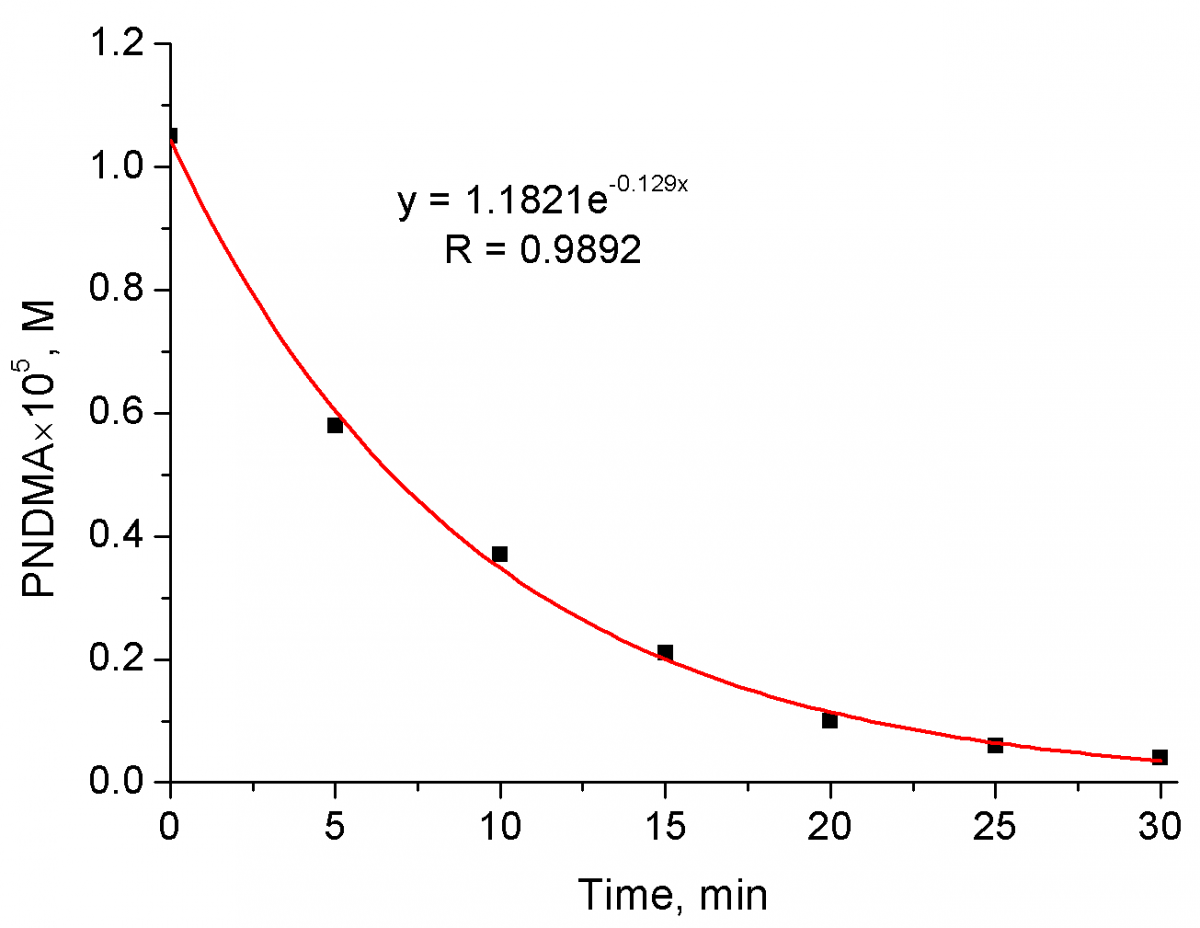

Downloads: 110
Author(s):
Field: Ecological chemistry
Type: Research paper
Issue: 2019 Volume 14, no.1
Pages: 54-60
Chidi Edbert Duru
Field: Ecological chemistry
Type: Research paper
Issue: 2019 Volume 14, no.1
Pages: 54-60
Full Text (PDF): Download
Graphical Abstract: Toxic heavy metals within a reclaimed section of the Orji mechanic village in Nigeria were determined using X-ray fluorescence and atomic adsorption spectrophotometric methods. The data were analyzed using geo-statistical techniques. Results showed that the soil was strongly contaminated by lead, and extremely contaminated by cadmium at some of the sampling points. The activities at the mechanic village in this area significantly affected the accumulation of these heavy metals and immediate soil remediation has been recommended.


Downloads: 96
Author(s):
Field: Ecological chemistry
Type: Research paper
Issue: 2018 Volume 13, no.1
Pages: 7-14
Margarita Skіba, Alexander Pivovarov, Anna Makarova, Victoria Vorobyova
Field: Ecological chemistry
Type: Research paper
Issue: 2018 Volume 13, no.1
Pages: 7-14
Full Text (PDF): Download
Abstract (PDF)
Graphical Abstract: The contact non-equilibrium low-temperature plasma technique is used to synthesize silver nanoparticles (AgNPs) employing trisodium citrate as capping agent. The AgNPs were characterized using UV-Vis spectroscopy, scanning electron microscopy, X-ray diffraction and zeta potential analysis. Additionally, the antibacterial properties of the synthesized AgNPs were assessed.
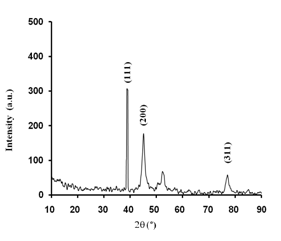
Graphical Abstract: The contact non-equilibrium low-temperature plasma technique is used to synthesize silver nanoparticles (AgNPs) employing trisodium citrate as capping agent. The AgNPs were characterized using UV-Vis spectroscopy, scanning electron microscopy, X-ray diffraction and zeta potential analysis. Additionally, the antibacterial properties of the synthesized AgNPs were assessed.

Downloads: 148
Author(s):
Field: Ecological chemistry
Type: Short communication
Issue: 2018 Volume 13, no.1
Pages: 117-121
Larisa Postolachi, Vasile Rusu, Tudor Lupascu, Oleg Petuhov
Field: Ecological chemistry
Type: Short communication
Issue: 2018 Volume 13, no.1
Pages: 117-121
Full Text (PDF): Download
Graphical Abstract: The aim of the study was to modify the diatomite from Ghidirim village (Ribnita distinct, Republic of Moldova) with purpose to use it as filter material. The initial diatomite was modified by alkaline treatment with sodium carbonate, and the filtering capacity was evaluated by suction filtration method. The treatment of diatomite by sodium carbonate resulted in an increased filtration rate, recording the most pronounced filtering capacity for diatomite treated with 20% solution of sodium carbonate.
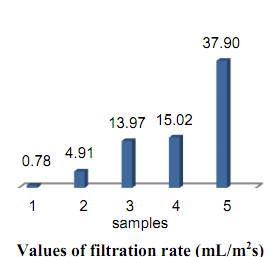

Downloads: 73
Author(s):
Field: Ecological chemistry
Type: Research paper
Issue: 2017 Volume 12, no.2
Pages: 71-78
Karima Seffah, Amel Zafour-Hadj-Ziane, Abdelghani Tarek Achour, Jean-François Guillet, Pierre Lonchambon, Emmanuel Flahaut
Field: Ecological chemistry
Type: Research paper
Issue: 2017 Volume 12, no.2
Pages: 71-78
Full Text (PDF): Download
DOI: http://dx.doi.org/10.19261/cjm.2017.412
Abstract (PDF)
Graphical Abstract: A new material (DWCNT/iron oxide) for heavy metals removal was developed by combining the adsorption features of double-walled carbon nanotubes with the magnetic properties of iron oxides. Batch experiments were applied in order to evaluate adsorption capacity of the DWCNT/iron oxide composite for cadmium ions. The influence of operating parameters such as pH value, amount of adsorbent, initial adsorbate concentration and agitation speed was studied. The adsorption capacity of the DWCNT/iron oxide adsorbent for Cd2+ ions was 20.8 mg g-1, which is at the state of the art. The obtained results revealed that DWCNT/iron oxide composite is a very promising adsorbent for removal of Cd2+ ions from water under natural conditions. The advantage of the magnetic composite is that it can be used as adsorbent for contaminants in water and can be subsequently controlled and removed from the medium by a simple magnetic process.
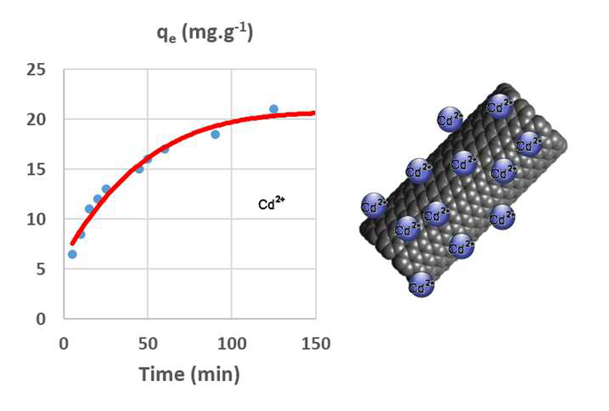
Abstract (PDF)
Graphical Abstract: A new material (DWCNT/iron oxide) for heavy metals removal was developed by combining the adsorption features of double-walled carbon nanotubes with the magnetic properties of iron oxides. Batch experiments were applied in order to evaluate adsorption capacity of the DWCNT/iron oxide composite for cadmium ions. The influence of operating parameters such as pH value, amount of adsorbent, initial adsorbate concentration and agitation speed was studied. The adsorption capacity of the DWCNT/iron oxide adsorbent for Cd2+ ions was 20.8 mg g-1, which is at the state of the art. The obtained results revealed that DWCNT/iron oxide composite is a very promising adsorbent for removal of Cd2+ ions from water under natural conditions. The advantage of the magnetic composite is that it can be used as adsorbent for contaminants in water and can be subsequently controlled and removed from the medium by a simple magnetic process.

Downloads: 98
Author(s):
Field: Ecological chemistry
Type: Research paper
Issue: 2017 Volume 12, no.1
Pages: 53-60
Cosmin-Tudor Iurcovschi, Marius Munteanu, Cristiana Manea (Amariei), Maria Modesta Lupașcu, Irina Crina Anca Sandu, Viorica Vasilache, Ion Sandu
Field: Ecological chemistry
Type: Research paper
Issue: 2017 Volume 12, no.1
Pages: 53-60
Full Text (PDF): Download
Abstract (PDF)
Graphical Abstract: This paper presents the study regarding the impact of the treatment with Câmpeni red petroleum on an eighteenth-century icon made of wood, with the aim of active preservation and restoration. In accomplishing this endeavour, there were applied non-invasive techniques of analysis based on optical microscopy (OM), Scanning Electron Microscopy (SEM) coupled with Energy Dispersive X-ray analysis (EDX), micro-FTIR and colorimetry CIEL*a*b*. A series of chemical, physical-structural and mechanical characteristics of the wood were traced, in order to assess the degree of preservation enhancement as a result of the applied treatment.
Graphical Abstract: This paper presents the study regarding the impact of the treatment with Câmpeni red petroleum on an eighteenth-century icon made of wood, with the aim of active preservation and restoration. In accomplishing this endeavour, there were applied non-invasive techniques of analysis based on optical microscopy (OM), Scanning Electron Microscopy (SEM) coupled with Energy Dispersive X-ray analysis (EDX), micro-FTIR and colorimetry CIEL*a*b*. A series of chemical, physical-structural and mechanical characteristics of the wood were traced, in order to assess the degree of preservation enhancement as a result of the applied treatment.
Downloads: 143
Author(s):
Field: Ecological chemistry
Type: Research paper
Issue: 2017 Volume 12, no.1
Pages: 37-44
Mykola Kartel, Vita Galysh
Field: Ecological chemistry
Type: Research paper
Issue: 2017 Volume 12, no.1
Pages: 37-44
Full Text (PDF): Download
Abstract (PDF)
Graphical Abstract: Composite lignocellulose-inorganic sorbents derived from plant residues of agriculture and food industry, modified with ferrocyanides of d-metals and hydrated antimony pentoxide were prepared. Caesium and strontium ions removal from water was tested by radiotracer method. Sorption of heavy metal ions, methylene blue, gelatin, vitamin B12 was also studied.
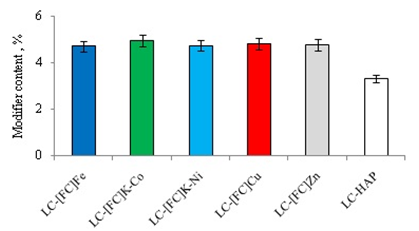
Graphical Abstract: Composite lignocellulose-inorganic sorbents derived from plant residues of agriculture and food industry, modified with ferrocyanides of d-metals and hydrated antimony pentoxide were prepared. Caesium and strontium ions removal from water was tested by radiotracer method. Sorption of heavy metal ions, methylene blue, gelatin, vitamin B12 was also studied.

Downloads: 136
Author(s):
Field: Ecological chemistry
Type: Research paper
Issue: 2017 Volume 12, no.1
Pages: 45-52
Michal Šereš, Tereza Hnátková, Jan Vymazal, Tomáš Vaněk
Field: Ecological chemistry
Type: Research paper
Issue: 2017 Volume 12, no.1
Pages: 45-52
Full Text (PDF): Download
Abstract (PDF)
Graphical Abstract: This study describes performance of a hybrid constructed wetland (CW) for treating wastewater from small farm in Czech Republic. TheCW consisting of two horizontal filters, one vertical filter and three shallow pondsand reduced inflow values of 25.400 mg/L COD and 2.640 mg/L BOD5 by up to 99%.
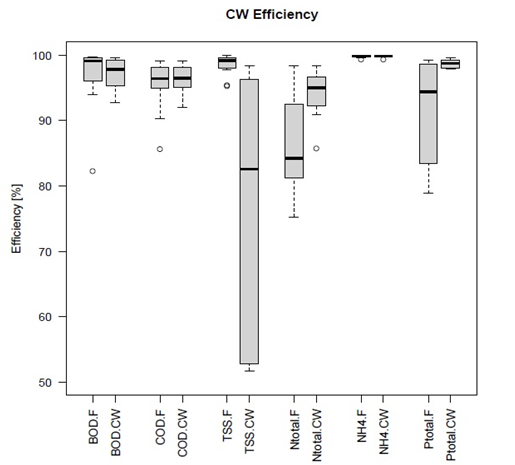
Graphical Abstract: This study describes performance of a hybrid constructed wetland (CW) for treating wastewater from small farm in Czech Republic. TheCW consisting of two horizontal filters, one vertical filter and three shallow pondsand reduced inflow values of 25.400 mg/L COD and 2.640 mg/L BOD5 by up to 99%.

Downloads: 160
